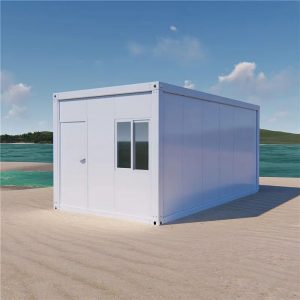Micro living in containers is a modern and innovative approach to housing design. Microliving helps in offering a sustainable and space-efficient solution to the growing demand for compact, stylish homes. Small container homes, once associated with industrial settings, have now evolved into chic and functional living spaces catering to various needs. This article explores the critical aspects of designing micro homes in containers, focusing on practical considerations and aesthetic elements so an individual can quickly build a small container home.
Maximizing Space Utilization
To maximize the space utilization, an individual has to focus on two different elements which are:
- Efficient Layouts:
Designing a micro home in a container requires proper planning to optimize the use of limited space. Employing open floor plans, multifunctional furniture, and creative storage solutions is essential for maximizing space utilization.
- Smart Storage Solutions:
Incorporating clever storage options, such as built-in cabinets, lofted storage areas, and furniture with hidden compartments, is crucial for micro-living. Utilizing vertical space allows residents to maintain a clutter-free environment while maximizing the available square footage.
Sustainability and Container Adaptation
There are also two different approaches to improving the sustainability and adaptation of containers.
- Eco-Friendly Design:
Container homes inherently support sustainable living practices due to the reuse of shipping containers. Moreover, integrating energy-efficient appliances, renewable energy sources, and eco-friendly materials also helps enhance the environmental profile of micro-living spaces.
- Climate Adaptation:
Container homes must be designed to adapt to various climates and other needs. Proper insulation, ventilation, and energy-efficient windows create a comfortable living environment. Green roofs or walls can also regulate temperature while adding a touch of nature to the compact space.
Stylish Design Elements
You can try these stylish design ideas for your homes, including:
- Contemporary Aesthetics:
Contrary to the misconception that container homes lack style, modern micro-living spaces can boast an ideal and contemporary aesthetic. Using industrial materials, minimalist furniture, and strategic lighting can create an attractive and visually appealing atmosphere.
- Customization and Personalization:
One advantage of small container homes California is their adaptability to various design preferences. Homeowners can personalize their space through color schemes, unique furniture, and creative decor. Incorporating elements that reflect the occupant's personality adds character to the compact living environment.
Technological Integration
Individuals must employ technological features in their container homes to make them more appealing and suitable for living.
- Smart Home Features:
Incorporating smart home technology helps enhance the functionality of micro living spaces. Automated lighting, temperature control, and security systems contribute to efficiency and align with the contemporary and technologically advanced image of container homes.
- Connectivity:
Ensuring reliable internet connectivity is essential for the modern lifestyle. Designing container homes with integrated Wi-Fi boosters and technology hubs caters to the increasing need for connectivity, supporting remote work and entertainment.
Outdoor Living Spaces
Enhancing micro living in containers involves extending the living space outdoors. Container terraces and rooftop gardens provide additional areas for relaxation and contribute to the home's overall aesthetic appeal. Greenery and outdoor seating can transform a compact container space into a vibrant and inviting oasis.
Flexibility and Modular Design
An individual must focus on flexibility, an essential aspect of micro-living. Incorporating modular furniture and adaptable spaces allows residents to transform their living areas based on their current needs. Foldable tables, convertible seating arrangements, and sliding partitions enable residents to create multifunctional spaces, optimizing the limited square footage.
Large Windows and Skylights
Maximizing natural light is crucial for container homes' comfort and visual appeal. Large windows and strategically placed skylights brighten the interior and create a sense of openness. Proper ventilation through strategically placed openings helps maintain a fresh, airy atmosphere within the compact living space.
Container Community Concepts
Designing shared spaces, communal gardens, and collaborative areas allows a sense of community among residents. These communal spaces can serve as extensions of individual homes. It also provides opportunities for social interaction and shared experiences.
Conclusion
Micro living in containers is beneficial and affordable and allows individual sustainability, efficiency, and style. By prioritizing space optimization, sustainability, and technological integration, designers can create micro-container homes that offer a comfortable and stylish living experience. As the demand for compact and innovative housing solutions continues to rise, container homes provide a viable and exciting option for those seeking a unique and modern lifestyle.


